Cuong M. Nguyen
Consistency-Based Semi-supervised Evidential Active Learning for Diagnostic Radiograph Classification
Sep 05, 2022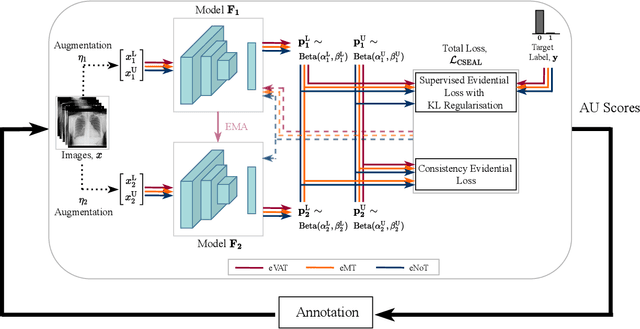
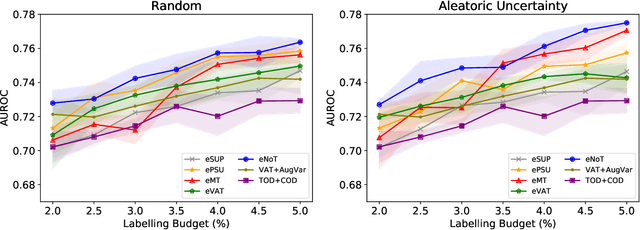
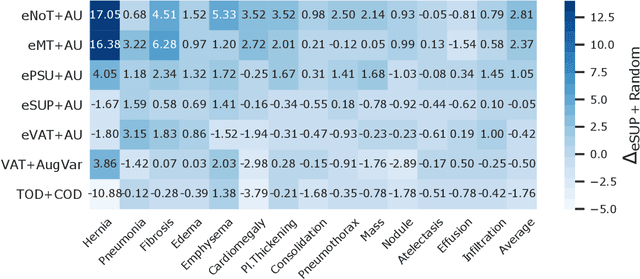
Abstract:Deep learning approaches achieve state-of-the-art performance for classifying radiology images, but rely on large labelled datasets that require resource-intensive annotation by specialists. Both semi-supervised learning and active learning can be utilised to mitigate this annotation burden. However, there is limited work on combining the advantages of semi-supervised and active learning approaches for multi-label medical image classification. Here, we introduce a novel Consistency-based Semi-supervised Evidential Active Learning framework (CSEAL). Specifically, we leverage predictive uncertainty based on theories of evidence and subjective logic to develop an end-to-end integrated approach that combines consistency-based semi-supervised learning with uncertainty-based active learning. We apply our approach to enhance four leading consistency-based semi-supervised learning methods: Pseudo-labelling, Virtual Adversarial Training, Mean Teacher and NoTeacher. Extensive evaluations on multi-label Chest X-Ray classification tasks demonstrate that CSEAL achieves substantive performance improvements over two leading semi-supervised active learning baselines. Further, a class-wise breakdown of results shows that our approach can substantially improve accuracy on rarer abnormalities with fewer labelled samples.
Deep Learning for Deepfakes Creation and Detection
Sep 25, 2019
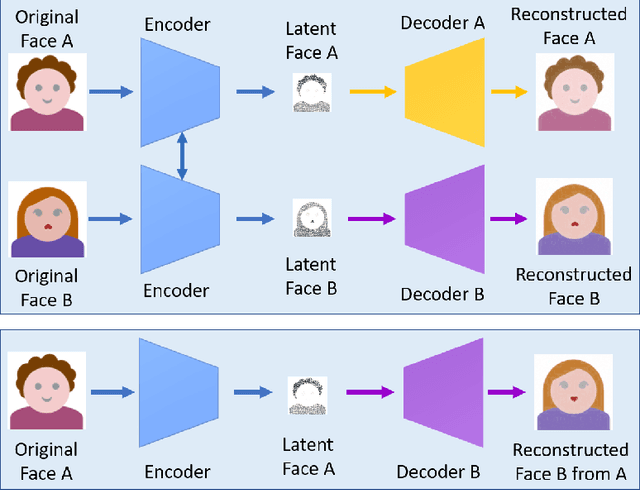
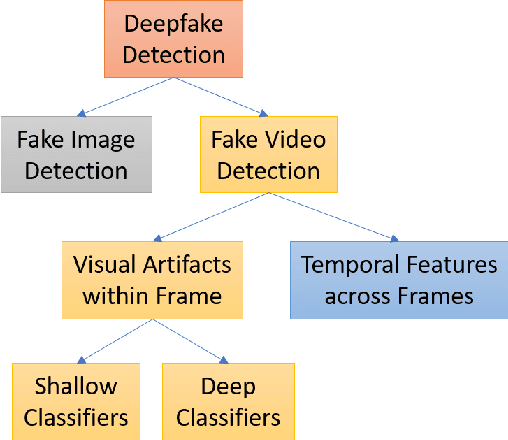
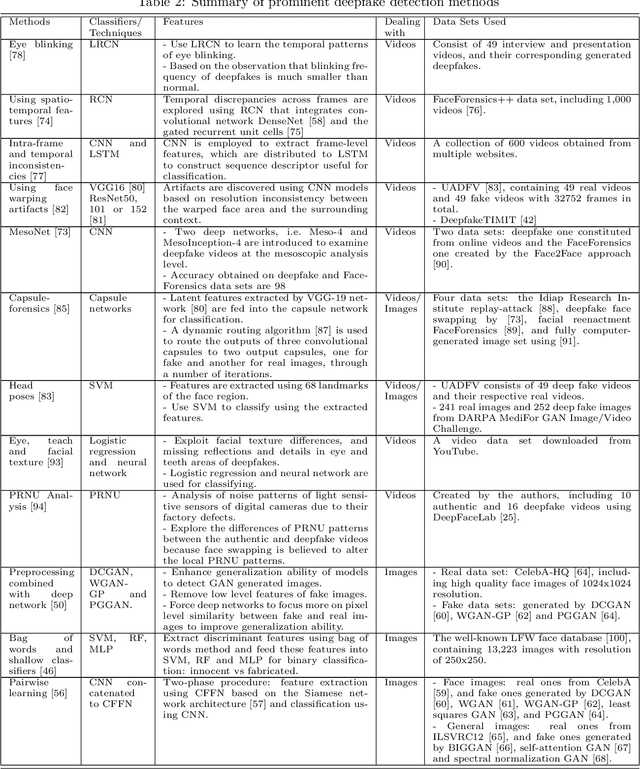
Abstract:Deep learning has been successfully applied to solve various complex problems ranging from big data analytics to computer vision and human-level control. Deep learning advances however have also been employed to create software that can cause threats to privacy, democracy and national security. One of those deep learning-powered applications recently emerged is "deepfake". Deepfake algorithms can create fake images and videos that humans cannot distinguish them from authentic ones. The proposal of technologies that can automatically detect and assess the integrity of digital visual media is therefore indispensable. This paper presents a survey of algorithms used to create deepfakes and, more importantly, methods proposed to detect deepfakes in the literature to date. We present extensive discussions on challenges, research trends and directions related to deepfake technologies. By reviewing the background of deepfakes and state-of-the-art deepfake detection methods, this study provides a comprehensive overview of deepfake techniques and facilitates the development of new and more robust methods to deal with the increasingly challenging deepfakes.
 Add to Chrome
Add to Chrome Add to Firefox
Add to Firefox Add to Edge
Add to Edge